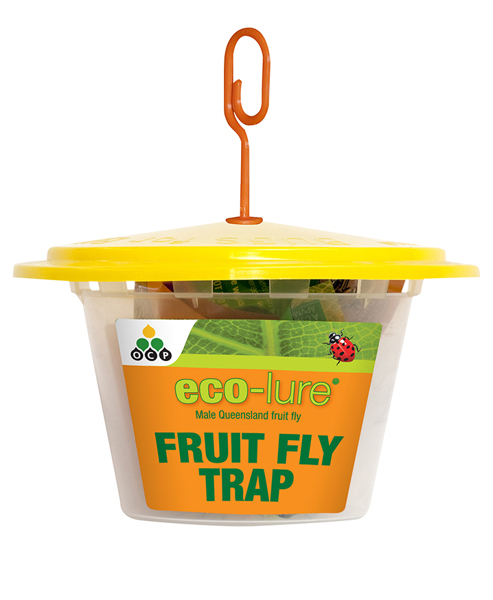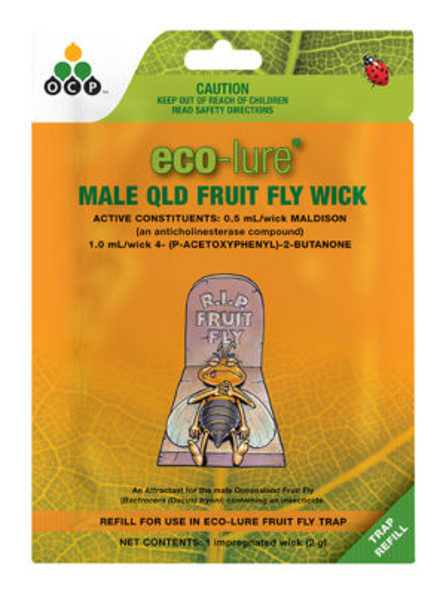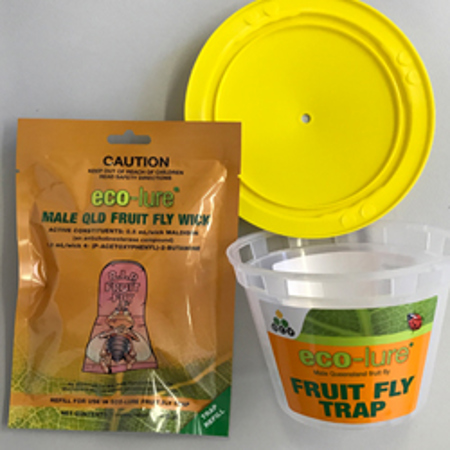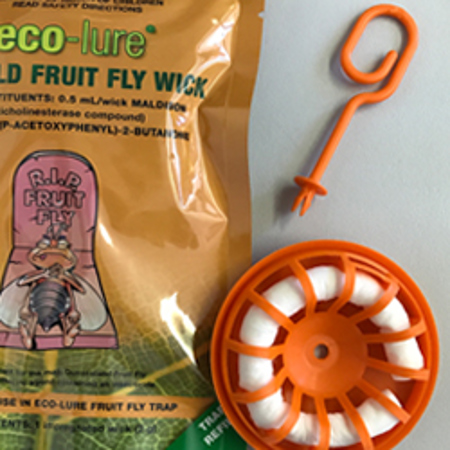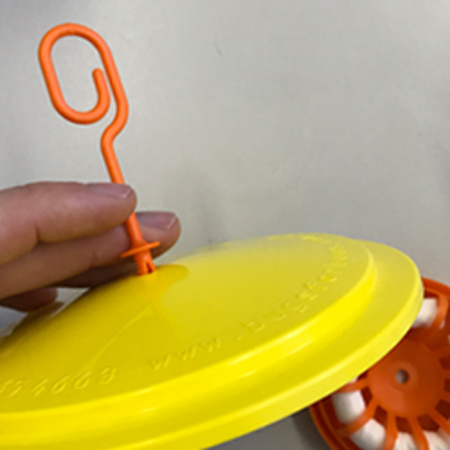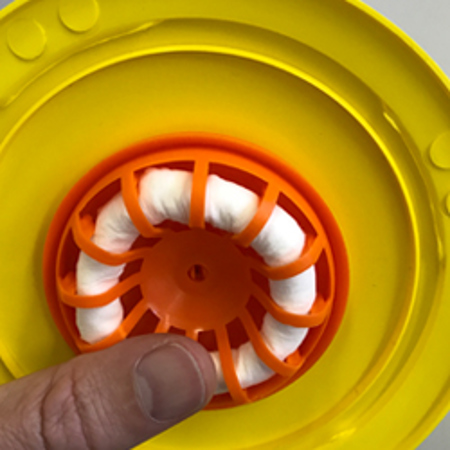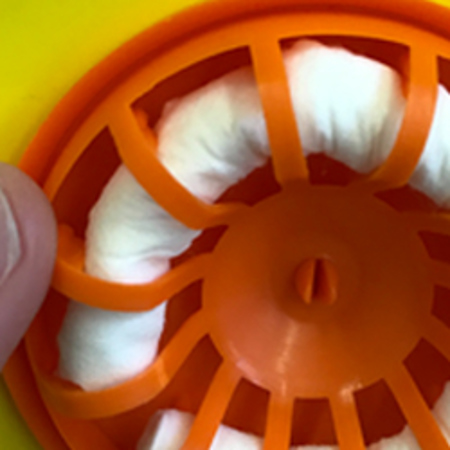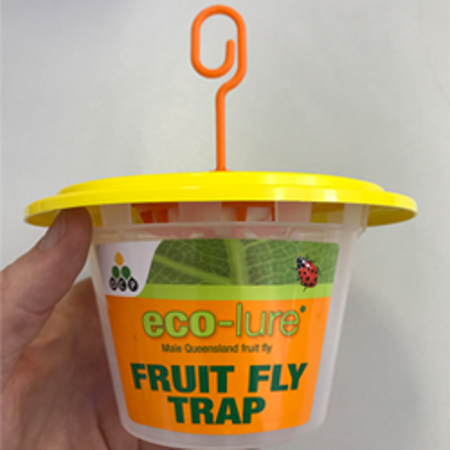eco-lure male Queensland fruit fly trap
eco-lure male Queensland fruit fly trap is an excellent tool for monitoring fruit fly presence in your garden. It contains a wick which has been impregnated with a pheromone attractant and a non-organic insecticide. Male QLD fruit flies are attracted to the pheromone, enter the trap and are killed when they touch the wick.
Hang in foliage at the beginning of the season and check regularly. When dead flies appear you’ll know flies are active and it is time to start spraying eco-naturalure to control females as well.
eco-lure on it’s own is not sufficient to completely protect fruit which is why we recommend including eco-naturalure as part of your protection program.
Replace wicks every 3 months or as required.
Features:
- Powerful pheromone attractant is irresistible to male QLD fruit flies
- Attracts and kills male QLD fruit flies
- Targets only male QLD fruit fly and won’t attract beneficial insects
- eco-lure trap will attract flies from approximately 400m
Not for WA as the pheromone is not attractive to Mediterranean fruit flies (Medflies).
Active Constituents:
0.5mL/wick Maldison (an anticholinesterase compound)
1.0mL/wick 4-(P-Acetoxyphenyl)-2-Butanone (the pheromone)
Click below to download the product label:
eco-lure Male QLD Fruit Fly Trap label
eco-lure Male QLD Fruit Fly Replacement Wick label
If you’re a little unsure how to assemble the eco-lure trap we’ve put together this Step-by-Step guide to make it easy. Just remember to wash your hands after handling the wick holder.
Click through to all our Safety Data Sheets (formerly MSDS).



